The first camera on my list of rentals is the Mamiya RZ67. I rented it along with a 65mm f/4 and 180mm f/4.5 lens. Part 1 of my discussion of it will focus on the camera in use: ergonomics, size, weight, etc. Part 2 will show images from the 4 rolls I exposed with the camera this weekend, and discuss the final results. Since none of these cameras are especially old or unknown, I won't provide basic information/stats; user manuals and lots of other information is easily available on the web.
As far as size goes, here are some comparison images (iPhone camera, sorry; since one of the comparisons is with my DSLR, I couldn't use it to take these!), with my 30D and Yashica D. The 30D has a 200mm f/2.8L on it, the largest lens I own; the RZ67 has the 180mm lens on it, although the 65mm isn't really any smaller. I'll try and reproduce these comparisons with all the cameras I rent.
As you can see, this is a large, serious camera. In use, however, it feels very good in the hand. All controls are easy to operate and see from the top of the camera; shutter speeds on the side, aperture on the lens, and the focus knobs down at the front. Also, a 6x7 waistlevel finder is a thing of beauty! The size and weight of the camera help hold it steady. I took several handheld shots with it, and the mirror also appears to be well damped; we'll see if the developed film bears out my conclusions here.

Mamiya-Sekor Z 180mm f/4.5 W-N (RZ67); Canon 30D, Canon 200mm f/2.8L, Canon 430EX & LumiQuest SB-II, LumoPro LP120
The lenses likewise are very large, not so much in length as in width, since they have to cover 6x7. With the bellows focusing, both lenses can focus very closely; the 65mm in particular can get right up against a subject (the bellows provide around 43mm of extension I believe). This allows for some nice near/far compositions with the 65mm, and with the 180mm, some nice single-detail close ups; I should have examples of both in my films. One minor quibble is the floating element adjustment on the 65mm, something I often forgot to adjust, since most of my shots were at infinity with that lens.
I ended up walking about 3.5 miles around Muir Woods carrying the RZ67, two lenses, meter, film, and tripod. With a comfortable shoulder bag, this was not a problem. The neck strap I had for the RZ was not the most supportive, but with a better strap the weight of the camera would not have been a problem. Adding another lens, another film back, or a prism finder would not be something I would want to do for very long. And I probably wouldn't want to take even the setup I had out all day for multiple days in a row.
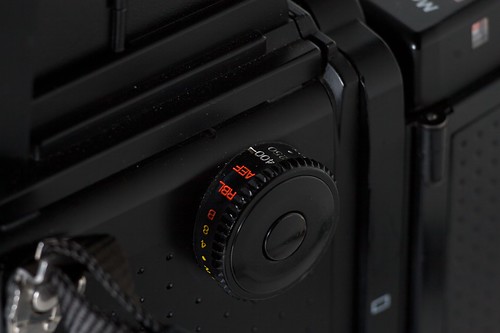
Mamiya RZ67 Pro II Shutter Dial; Canon 30D, Canon 200mm f/2.8L, Canon 430EX & LumiQuest SB-II, LumoPro LP120
In general, though, I liked the RZ67 a lot. Of course, as it's the first camera I'm trying, I don't have many comparisons to make; perhaps a 6x6 SLR will feel even better. Part 2 will examine frames from Muir Woods, Mt Tam, and some food photography to see if the results are as nice as the camera itself, and will discuss whether the camera satisfies my criteria.
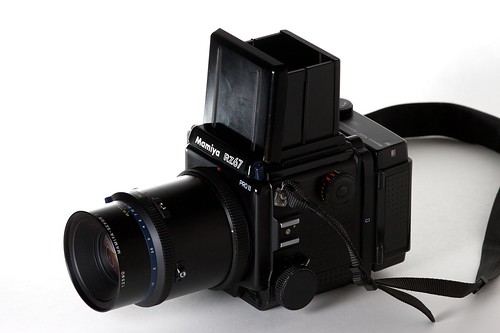

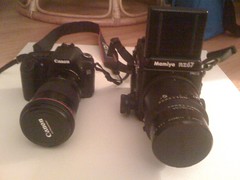

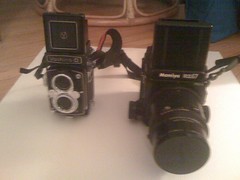
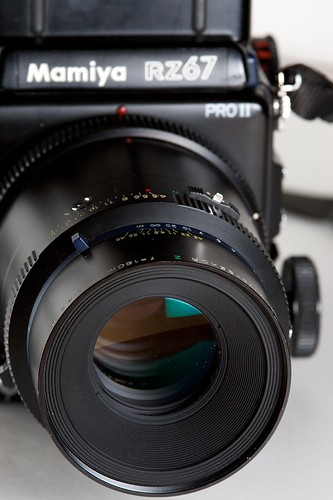

No comments:
Post a Comment